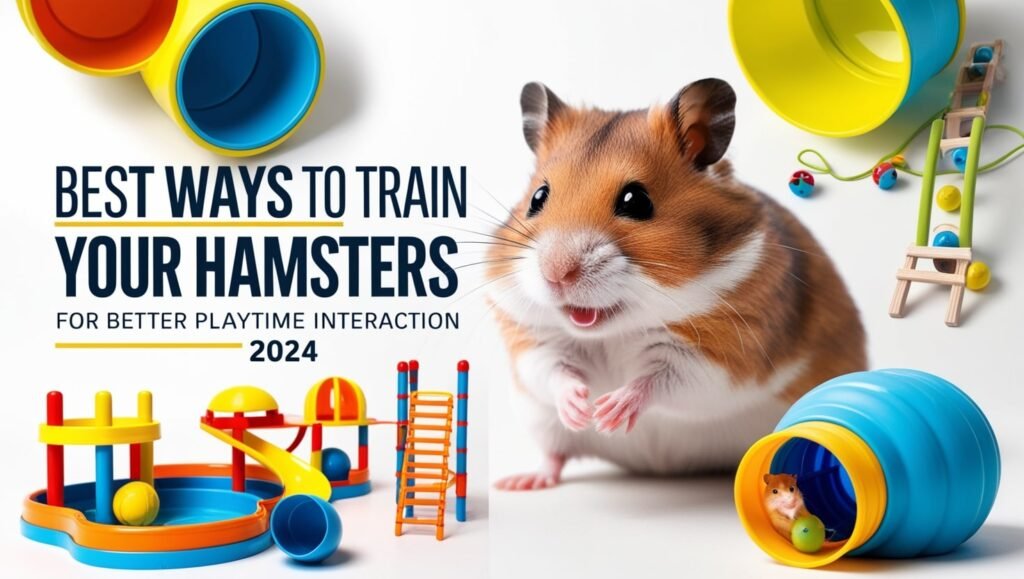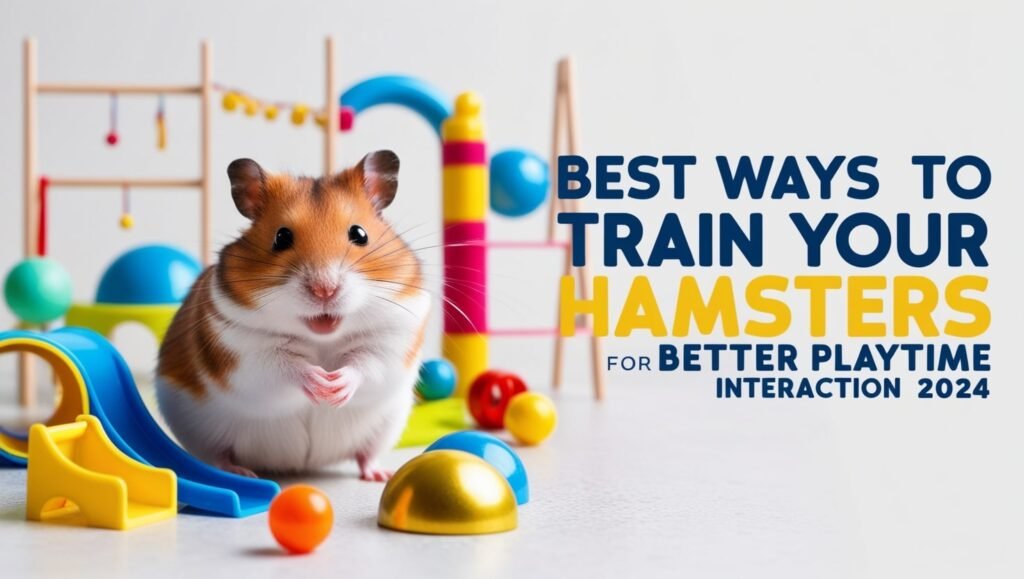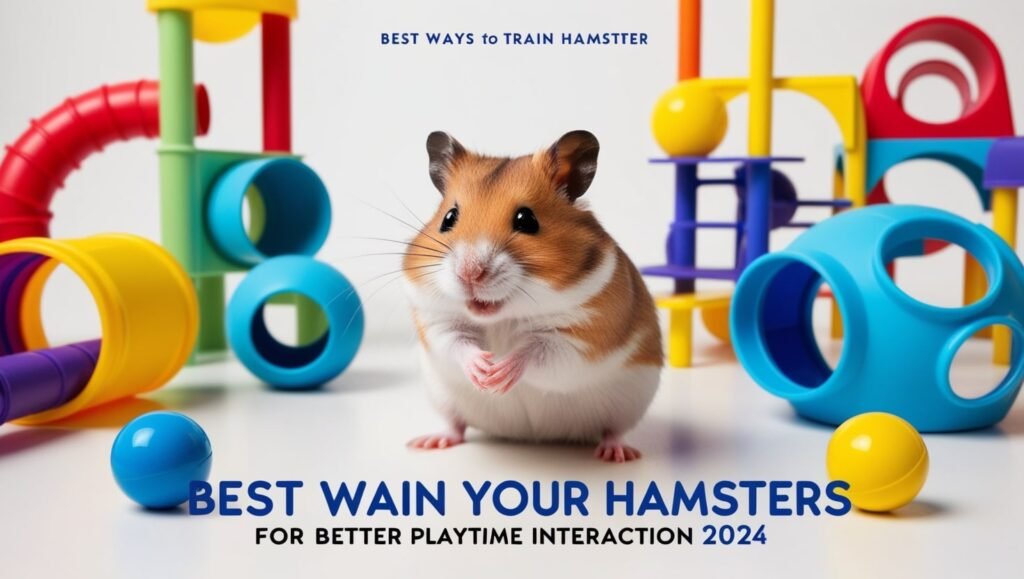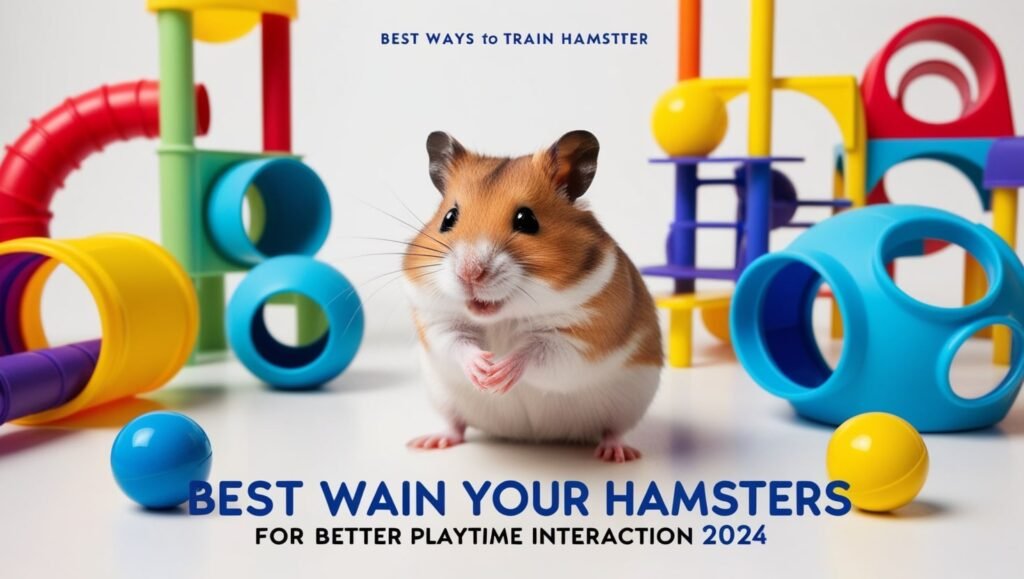Introduction to Training Your Hamsters
Want to teach your hamster how to play and have fun? then you are welcome to go through this comprehensive guide on how to train your hamster for fun play. Training also benefits your pet, and the correlation between you and your pet becomes a lot stronger when you have to train them.

Importance of Training Hamsters
Since, preparing helps the hamsters by honing their cerebrums, practicing their bodies, and deterring them from fostering those ways of behaving related to weariness. It is preventive to their general health and also their well-being and happiness in the process.
Overview of Playtime Interaction Benefits what is the best hamster
The playtime sessions have the following advantages for the hamster: social interaction, decreased stress, and better environmental exploitation. Such interactions are important to their welfare and well-being, even though they are animals.
Understanding Hamster Behavior
Natural Instincts and Habits
In general, hamsters are viewed as playful animals with inborn predilections towards vociferation and curiosity. Knowledge of these instincts goes a long way toward the choice of training methods that fit the animal’s inherent tendencies.
Species of Hamsters and Their Affinity
Syrian, Dwarf, and Roborovski hams are known to have different temperaments, though all are social creatures. It’s noteworthy that Syrians are more inactive compared to dwarfs, the latter are characterized by their gregariousness. Knowing these differences helps in adapting training techniques accordingly.

Creating a Training Environment
Selecting the Right Space
Choose a quiet and secure area for training sessions. Make sure the area is not too exposed to draughts or direct sunlight, and there are no obstacles that a hamster could damage or get trapped in, such as wires or small holes.
Safety Considerations
There is a very important element that must not be tolerated in training, and that is danger. Circulation of fresh air in the training zone should be adequate, the room temperature should be maintained appropriately, and risks which may be inherent in the zone should be well addressed.
Essential Tools and Toys
Enrich the hamster’s environment with many interactive toys, tunnels, and exercise wheels—these are sources of physical and mental stimulation. In effect, this greatly enhances the positive outcome and fun of training sessions.
Basic Training Techniques
Positive Reinforcement Methods
Positively reinforce your hamster’s good behavior by offering either a treat or a verbal reward. A good instance will be giving your hamster a tiny piece of vegetable or fruit for Responding to his name, or for doing something.
Using Treats Effectively
Provide treats in moderate amounts to avoid overfeeding. Give healthy treats, like small chunks of carrots and cucumbers, to contribute to the balanced diet and not just as a rewarding treat.
Training Timing and Consistency
Consistency is key to successful training. Schedule short, regular training sessions to maintain your hamster’s focus and reinforce positive behaviors consistently.
Engaging Playtime Activities
Interactive Toys and Puzzles
Use interactive toys and puzzles that allow for problem-solving. For instance, a puzzle or a maze-hide toy with hidden treats can keep your hamster busy and active in its mind.
Obstacle Courses for Exercise
Set up basic impediment courses utilizing passages, inclines, and little stages. These courses promote physical exercise and agility, mimicking their natural habitat where they would encounter similar challenges.

Free-Roaming Play Sessions
Allow the hamster some supervised time free-roaming in a safe area outside the cage for a while. This will allow your hamster to look around at new surroundings, spend some quality time with you, and exercise in a safe environment.
Socialization Strategies
Gradual Introduction to Handling
Start by gently handling your hamster to acclimate them to human touch. Gradually increase the duration of handling sessions as they become more comfortable and trusting.
Encouraging Interaction with Humans
Engage in gentle petting and interactive play during bonding sessions. Respect your hamster’s boundaries and allow them to initiate interactions to build trust naturally.
Understanding Hamster Body Language
Learn to read your hamster’s body language to understand how he or she feels and whether they are comfortable. One can use such signs as grooming, ear position, and vocalizations to understand their emotional state.
Troubleshooting Common Issues
Addressing Fear and Anxiety
Create a calm and reassuring environment during training sessions. Slowly introduce new experiences and stimuli to help your hamster overcome fear and anxiety gradually.

Manage Biting or Aggressive Behaviors
Try to find out what triggers the animal to act out their aggressive behaviors and divert their attention to positive behavior instead. Consult a veterinarian if aggressive behaviors continue or deteriorate.
Identifying Stress
The hamster will help in distinguishing different stressors via unreasonable Storing away, loss of craving, or in any event, gnawing. Adjust their environments to minimize the stressor to ensure comfort.
Conclusion
Training your hamster for playtime interaction is most rewarding for their quality of life and strengthens the bond between you. By understanding their behaviors and providing a proper environment, you can fill every minute with numerous enriching activities for you and your pet.
Recap of the Importance of Training
Regular training sessions keep your hamster both physically and mentally stimulated and prevent behavioral problems born from boredom and inactivity.
Encouragement in Building a Strong Relationship with Hamsters
Look at training as a means of increasing your bonding time with the hamster. As you train your pet patiently, consistently, and lovingly, you will be able to foster a wonderful lifelong bond.



